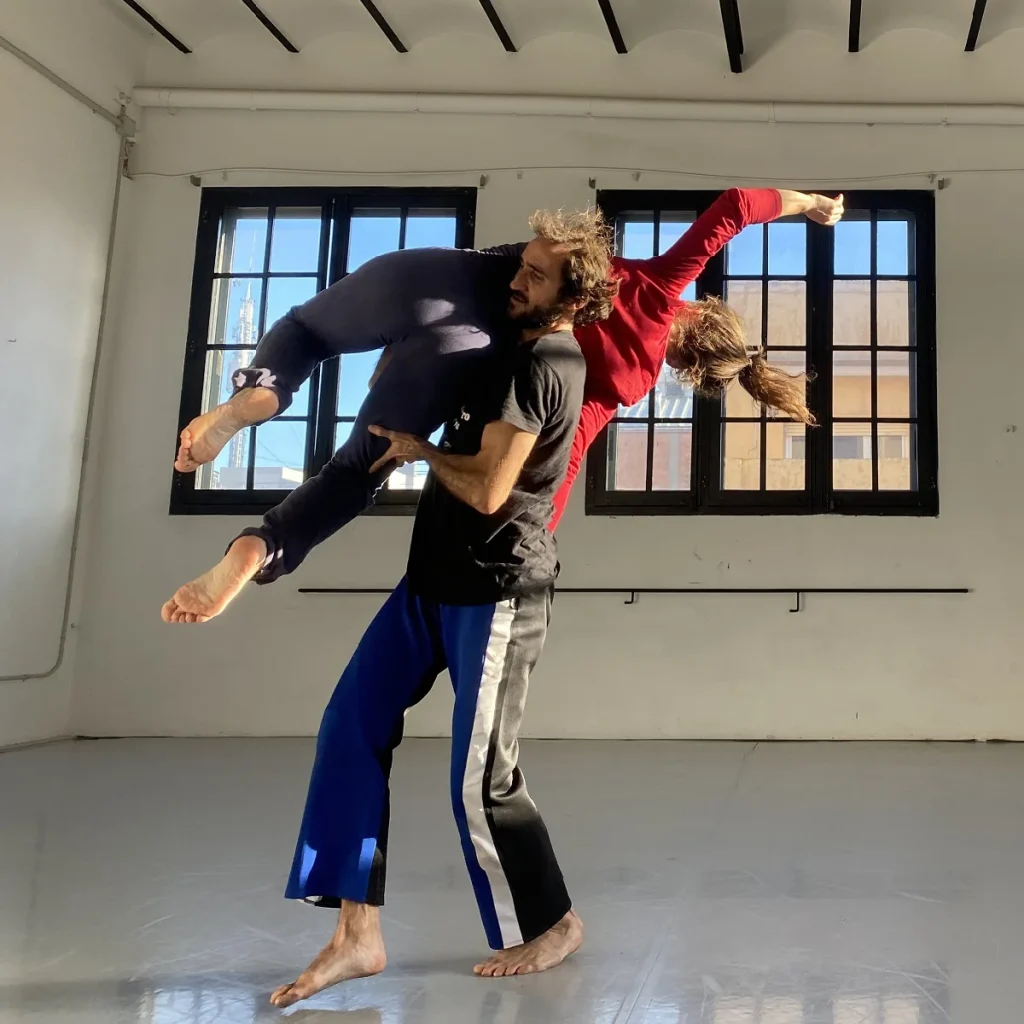
Regular classes
Specialized Contact Improvisation classes designed for schools and institutions, creating a supportive environment where students can explore movement, connection, and trust through this dynamic dance form. My classes emphasize foundational techniques such as weight-sharing, balance, and spatial awareness, all tailored to meet the unique needs and experience levels of each group. Through regular sessions, students develop confidence, physical coordination, and collaborative skills, making this a valuable addition to any educational or artistic curriculum.
Some Areas of Exploration
In my ongoing journey with Contact Improvisation (CI), as dancer, researcher and teacher, I’ve identified a few subjects that are of my particular interest, and that I find also essential to understanding the mechanics and artistic potential of CI. Below, I share some examples of these subjects, offering a glimpse into the insights and techniques I explore and develop through my teachings.
Falling
Safely exploration of falling, meeting the ground with control. Through warm-ups, joint softening, and partnered exercises, participants build confidence, learning to trust their bodies’ natural intelligence and find momentum for a «flying» sensation.
Flying
Introduces safe lifting and being lifted by exploring momentum and taking advantatge of our natural body weight. Participants learn to trust the fall and use flow rather than strength, protecting joints and muscles. Through guided partner exercises, dancers experience the lightness and freedom of «flying» with ease and support.
Weight Sharing Continuum
Exploration of the dynamic exchange of weight in movement, helping dancers develop trust and adaptability with a partner. Through grounding exercises, body listening, and balance exploration, participants find fluid pathways for shifting support, creating an intuitive flow between giving and receiving weight in motion.
Playing with Manipulation
delves into guiding, redirecting, and shaping a partner’s movement with subtlety and sensitivity. Through exercises in balance, timing, and resistance, participants learn how to respectfully influence one another’s motion, building trust, body awareness, and a responsive dialogue that deepens the improvisational connection.
Our Back Space
Engaging with the lesser-used areas behind the body. Through exercises that build awareness and confidence, participants learn to navigate backward, releasing fear and embracing trust in these unseen spaces, expanding both physical range and comfort in movement partnerships.
On Following and Leading
Exploration of the dynamic roles of guide and responder in dance. Through exercises that shift between leading and following, dancers become attuned to subtle cues, developing trust and awareness. The practice emphasizes presence, adaptability, and responsiveness within the shared improvisational flow.